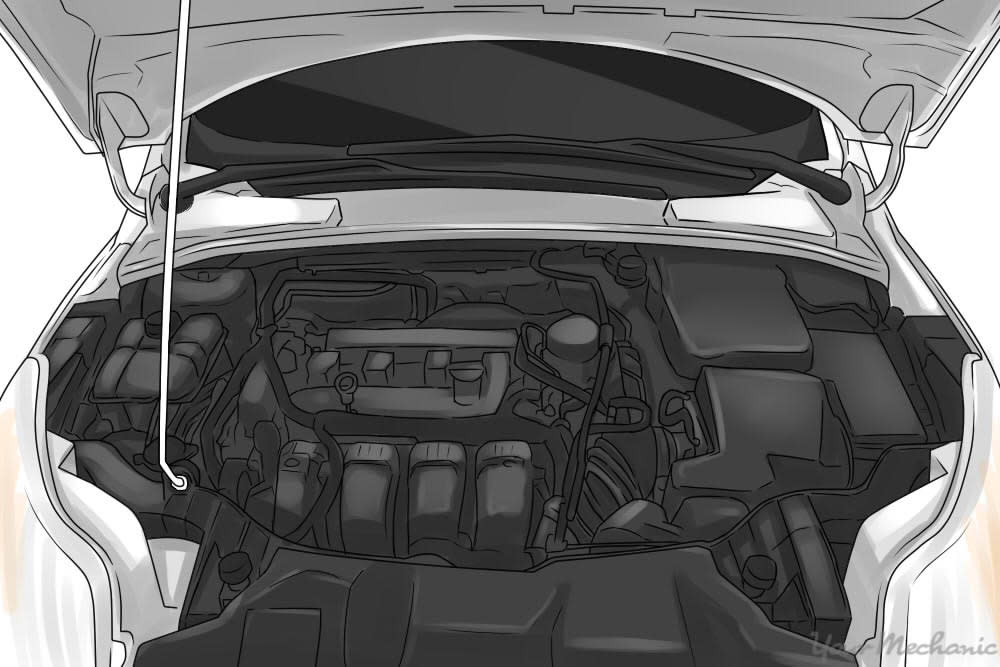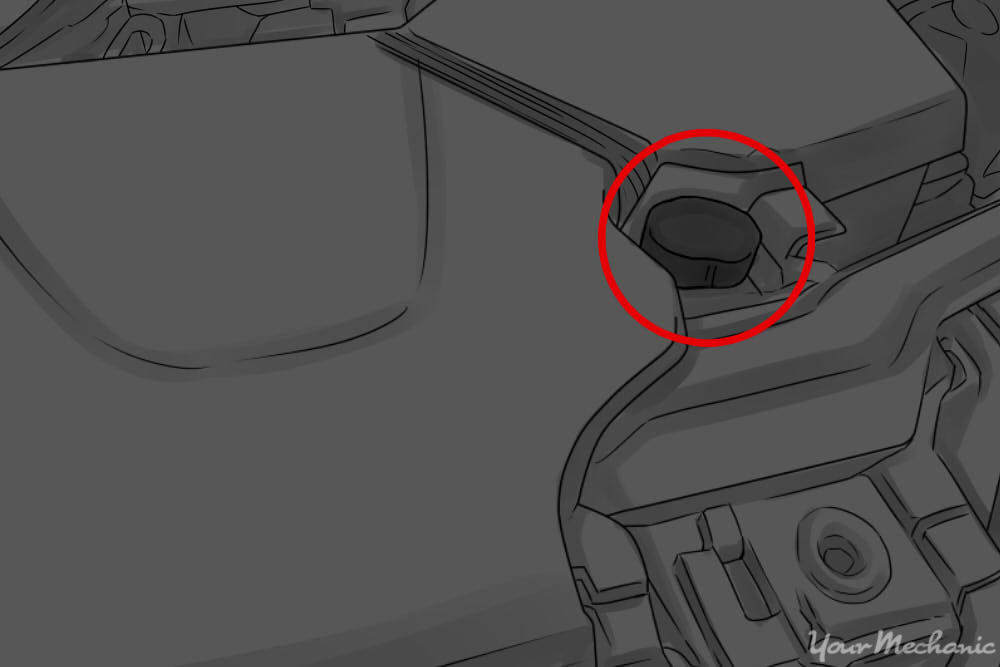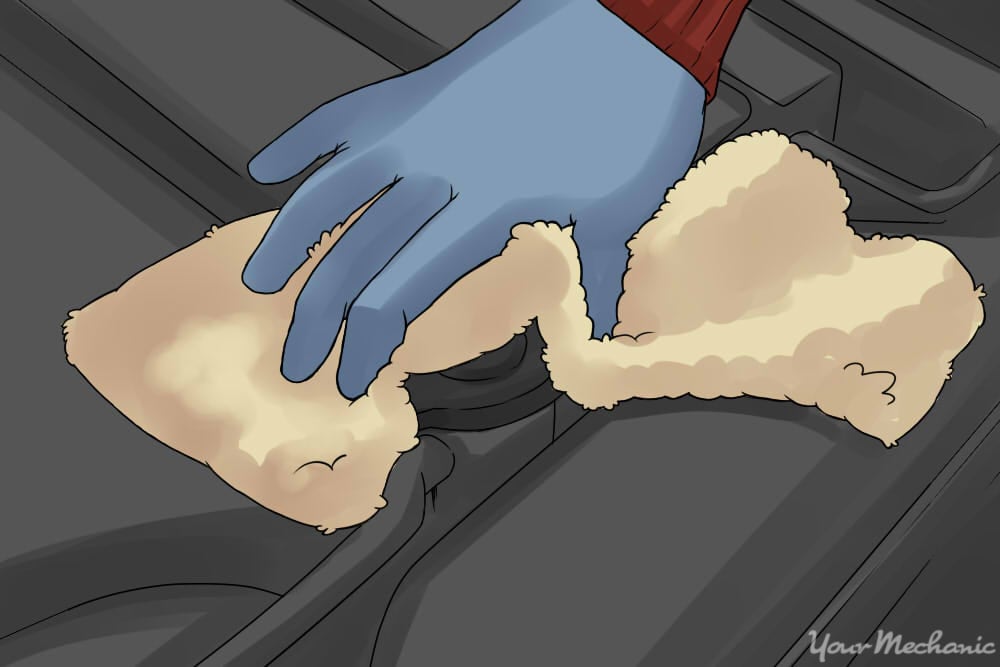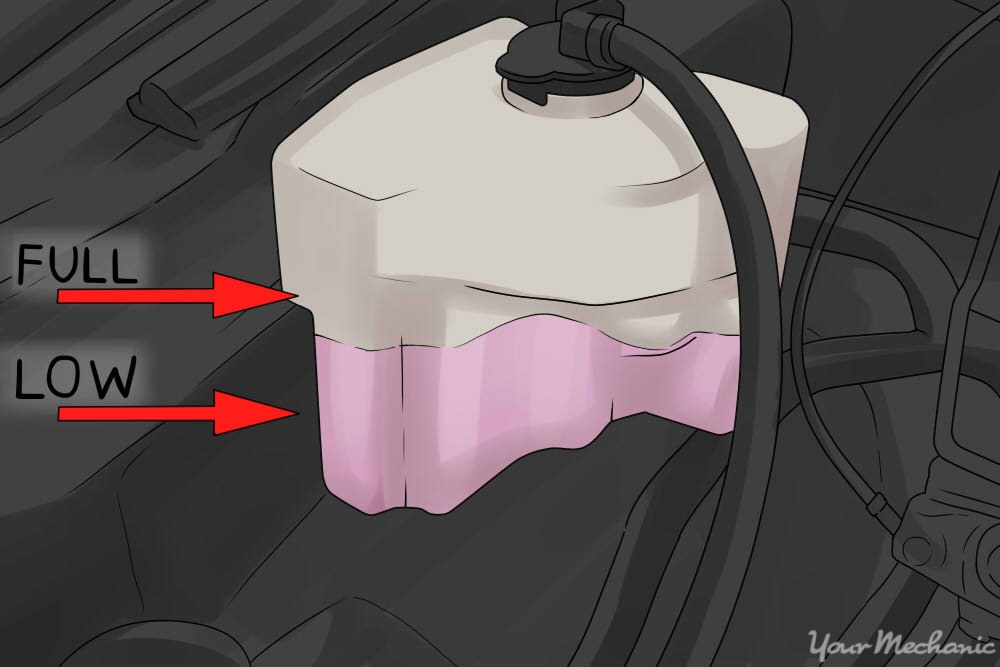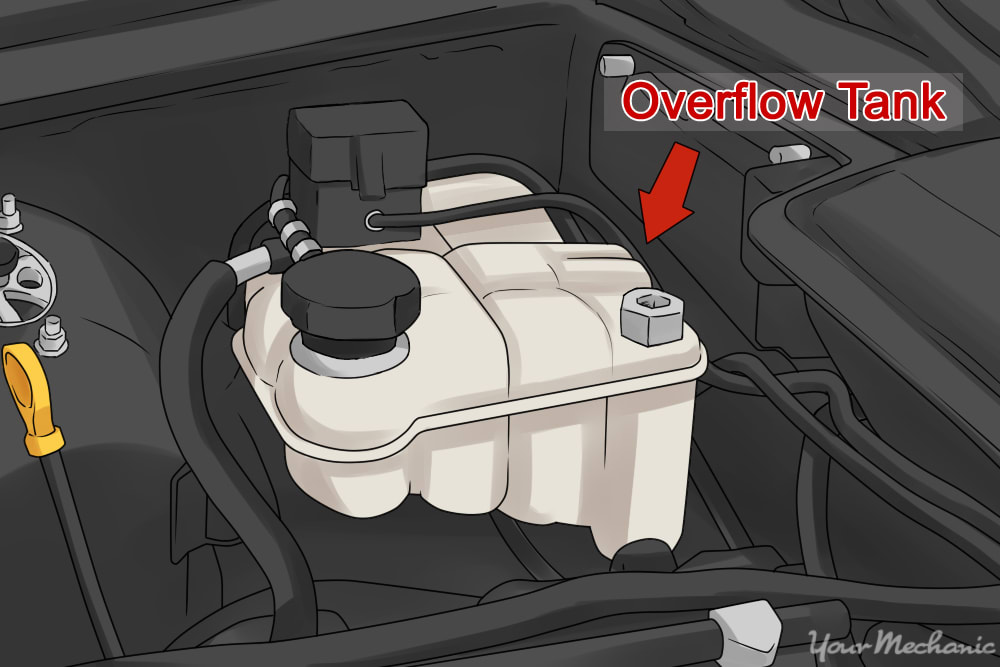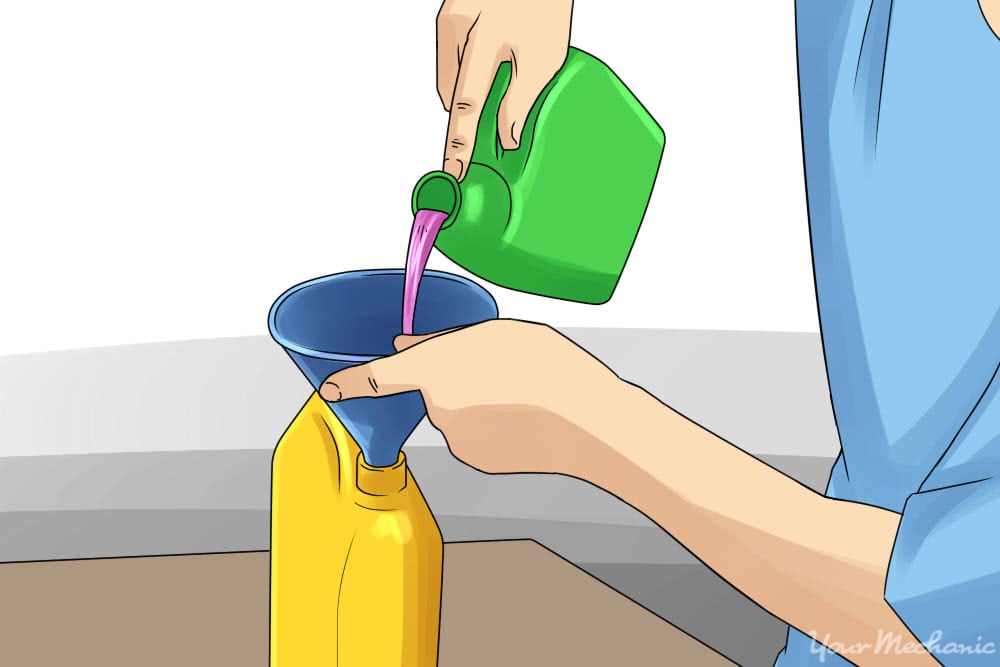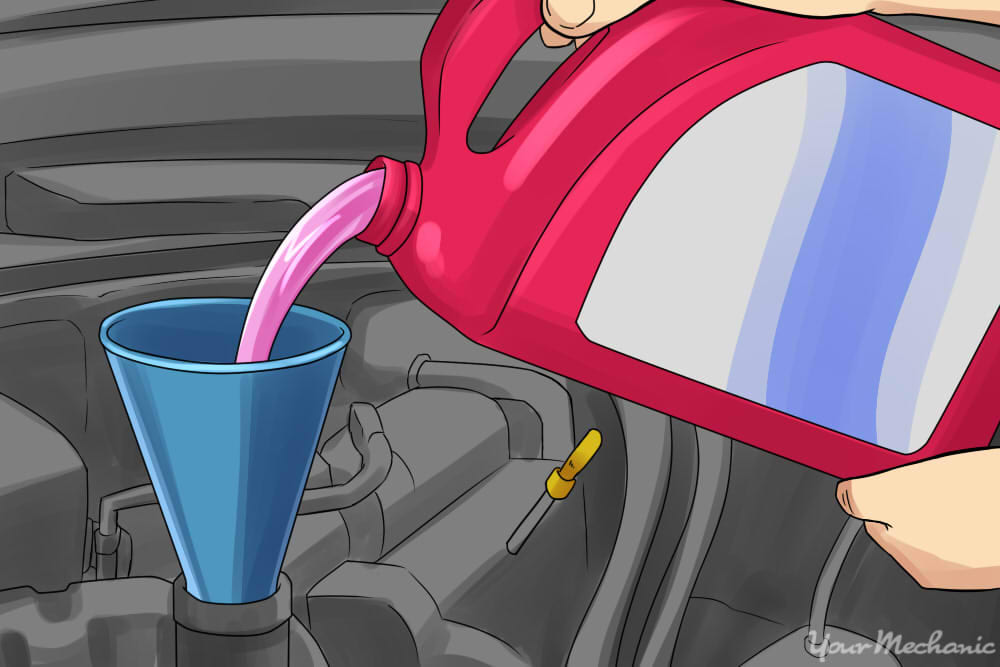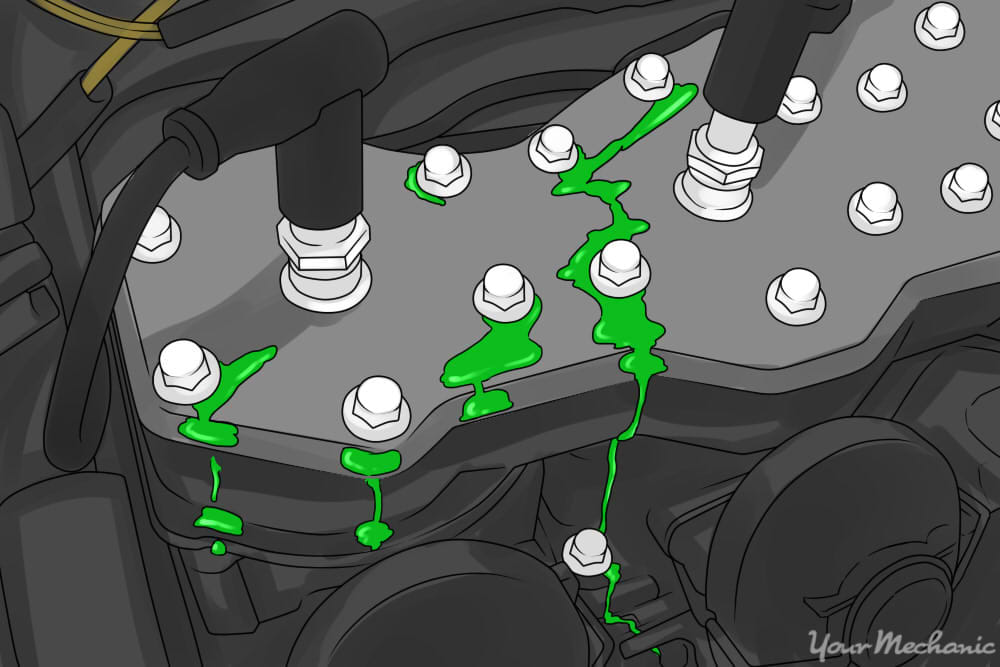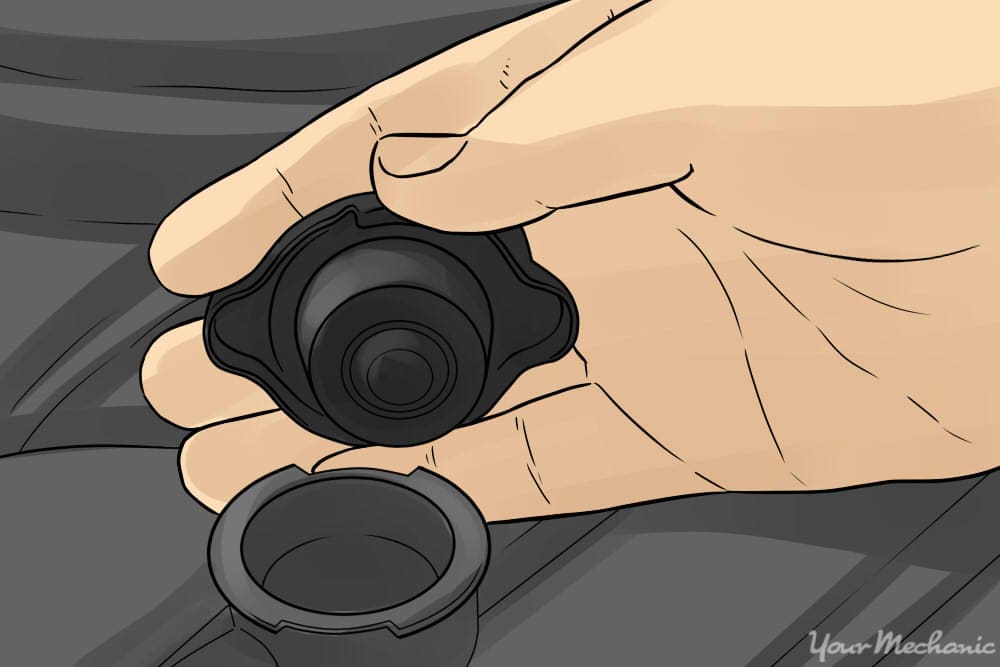

The radiator is at the heart of your car’s cooling system. This system directs radiator fluid or coolant around the engine’s cylinder heads and valves to absorb their heat and dissipate it safely using cooling fans.
The radiator cools your engine and without it, the engine may overheat and stop working. The radiator needs water and coolant (antifreeze) to function properly. To ensure this, you must check and add coolant periodically in order to maintain an adequate radiator fluid level.
Part 1 of 2: Check the radiator fluid
Materials Needed
- Gloves
- Towel or rag
Step 1: Make sure the engine is cool. Before checking the radiator fluid, the car should be turned off and allowed to sit until the radiator is cool to the touch. The engine should be cool or very close to cool before attempting to remove the cap from the radiator.
- Tip: You can check if the car is ready by touching your hand to the hood of the car. If the car has been running recently and is still hot, then let it sit for about half an hour. In cold areas, this may take only a few minutes.
Step 2: Open the hood. Once the engine has cooled, pull the hood release lever inside the car, then reach under the front of the hood and lift the hood up completely.
Prop the hood up on the metal rod under the hood if it does not stay up on its own.
Step 3: Locate the radiator cap. The radiator cap is a pressurized cap near the top of the radiator at the front of the engine bay.
- Tip: Most newer cars have labeled radiator caps and these caps usually have a more oval shape compared to others in the engine bay. If your radiator cap is not labeled, check your owner's manual to find it..
Step 4: Open the radiator cap. Wrap a towel or rag lightly around the cap and lift it off of the radiator.
Warning: Do not open the radiator cap if it is hot. This system will be pressurized, and this pressurized gas can cause severe burns if the engine is still hot when the cap is removed.
Tip: Pressing down on the cap when twisting helps to get it loose.
Step 5: Check the level of fluid inside the radiator. The radiator expansion tank should be clear and the coolant level can be checked by looking at the tank fill level markings on the side on the tank.
This fluid is a mixture of coolant and distilled water.
Part 2 of 2: Add more radiator fluid
Materials Needed
- Coolant
- Distilled water
- Funnel
Gloves
Note: Refer to the owner’s manual of your car to see the coolant specifications for your vehicle.
Step 1: Locate the overflow tank. Before adding any fluid to the radiator, look at the side of the radiator and locate the overflow tank.
This small reservoir on the side of the radiator collects any fluid that spills out when the radiator overflows.
Tip: Most overflow tanks have a way to move the coolant they contain back into the cooling system, so it is a good idea to add the radiator fluid to this overflow tank rather than directly into the radiator. This way the new fluid will work its way into the cooling system when there is room and there will not be an overflow.
Note: If radiator level is low and the overflow tank is full, then you may have a problem with the radiator cap and overflow system and should should have a mechanic inspect the system.
Step 2: Mix coolant with distilled water. To mix the radiator fluid properly, mix the coolant and distilled water in a 50/50 proportion.
Fill an empty radiator fluid bottle halfway with water and then fill the rest of the bottle with radiator fluid.
- Tip: A mixture containing up to 70% coolant will still work, but in most conditions a half-and-half mix is more efficient.
Step 3: Pour the radiator fluid into the system. Pour this radiator fluid mixture into the overflow tank, if there is one.
If there is no overflow tank or if the tank does not empty back into the cooling system, then pour this directly into the radiator, making sure not to go over the “full” line.
- Warning: Make sure to put the radiator cap back on after adding the new coolant and before starting the engine.
Step 4: Start the engine. Listen to for any unusual sounds and check the functioning of the radiator fans.
If you hear clanging or humming noises, then the cooling fan may be struggling and that could cause insufficient cooling as well.
Step 5: Look for any leaks. Look at the tubes and hoses circulating coolant around the engine and check for any leaks or kinks. Any existing leaks may become more apparent with the new fluid that you just added .
Keeping radiator fluid in the cooling system is extremely important for keeping the drivetrain in good working condition for a long time. Without proper cooling, the engine could overheat.
- Tip: If you notice that you are quickly losing coolant even after adding fluid, there may be a leak in the system that you are not seeing. In this case, have a certified mechanic inspect your system both externally and internally to locate and repair the coolant leak.
Keep an eye out for cooling-related issues when driving in hot weather or when towing anything. Cars are also susceptible to overheating on long climbs and when they are fully packed with people and/or stuff.
The radiator of your car is vital for keeping the vehicle from overheating. If your radiator fluid runs low, you are risking severe damage to your engine. Preventative maintenance on your coolant levels is much less expensive than repairing an overheated engine. Whenever you find your radiator fluid levels diminishing, you should arrange to add coolant as soon as possible.
If you want a professional to check your radiator fluid for you, have a certified mechanic, such as one from YourMechanic, inspect your coolant levels and provide a radiator fluid service for you. If you feel that the radiator fan is not working or if your radiator itself is not working you can get it inspected and replaced by our knowledgeable mobile mechanics.



